Prof. Jim Cummings’ “screenomics” research featured in The New York Times
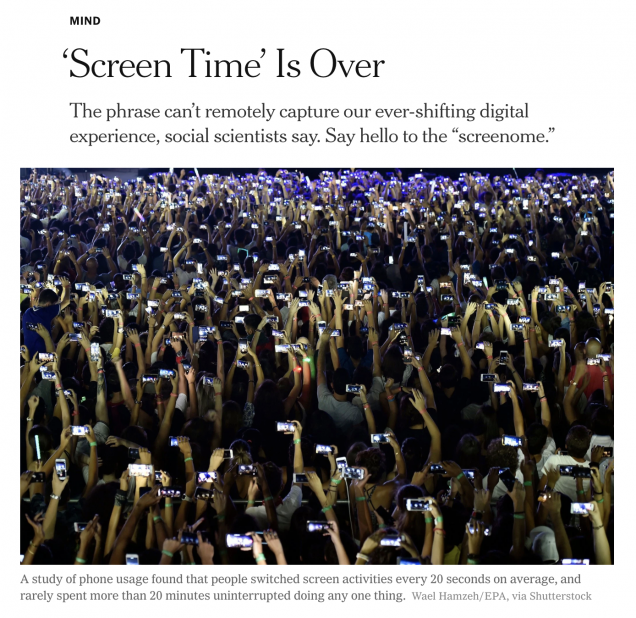
A New York Times article about the changing nature of our digital experiences cites a recently-published paper in Human-Computer Interaction co-authored by the CRC's Jim Cummings.
The concept of "screen time" has been long used to understand how—and for how long—individuals interact with their devices. But as more applications have become available to internet users, understanding people's digital experiences and how often they switch between tasks has become more complicated.
"Consider what a person can do in just the time it takes to wait for a bus: text, watch a comedy skit, play a video game, buy concert tickets, take five selfies, each with a different set of cartoon ears," explains The New York Times' Benedict Carey.
As a response to this newfound complexity and fragmentation of experience, Cummings and his co-researchers documented, via screenshots, the digital activity of 30 participants. The resulting digital records, they write, are best conceived of as "screenomes"—adapted from the word "genome."
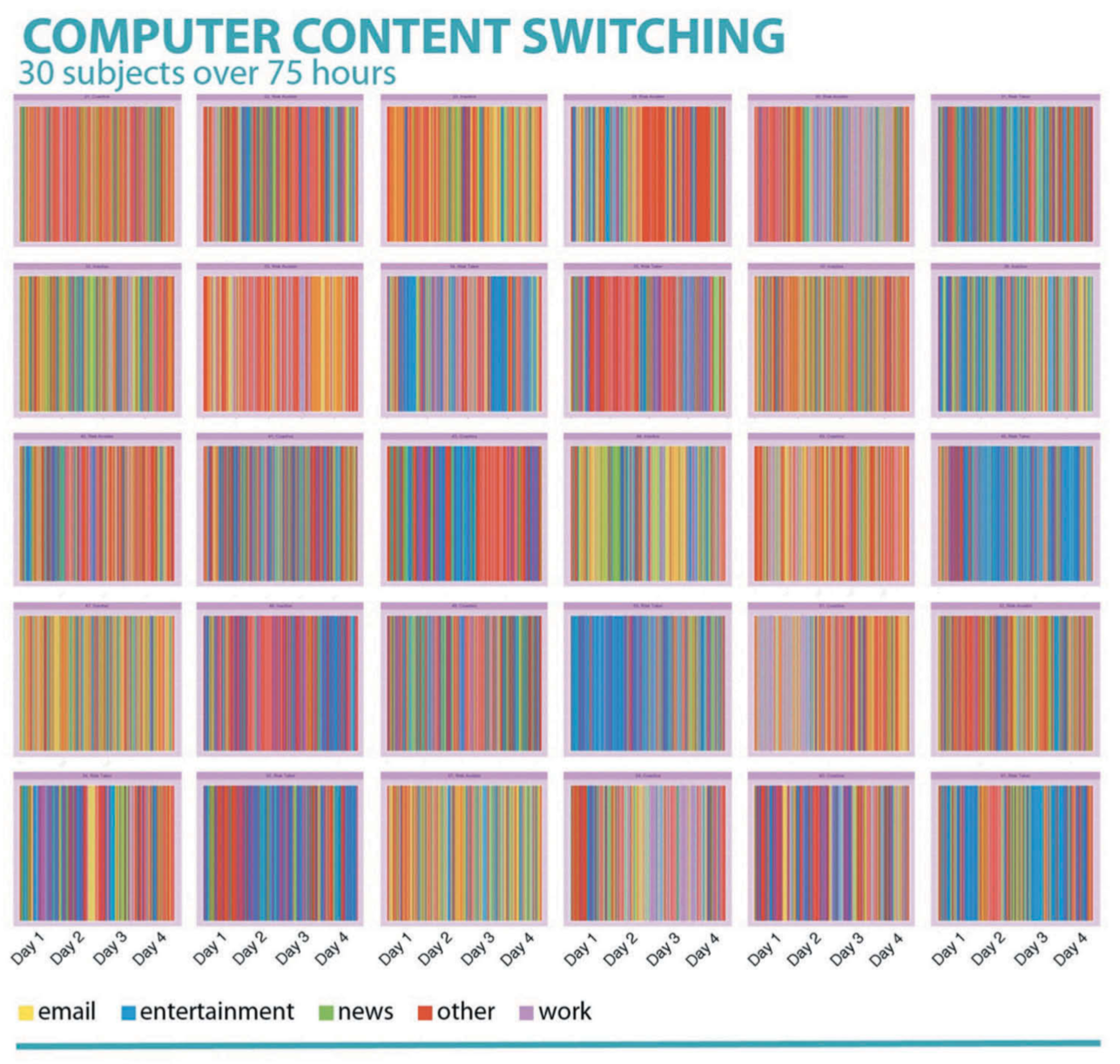
Researchers reported that, on average, participants switched from one screen activity to another every 20 seconds and spent hardly 20 minutes on one continuous activity. Their findings were presented as a stream of color-coded graphs (shown at left) depicting what kind of activities individuals used their screens for—entertainment, news, or work, for instance—and how they switched between these tasks.
Quoted in The New York Times' piece, co-author Byron Reeves (Professor of Communication at Stanford University) explained the significance of their proposed "screenomic" framework.
“It’s very counterintuitive to say at this stage, but the fact is, no one really knows what the heck people are seeing on their screens. To understand what’s happening, we need to know what exactly that is.”
 Many CRC fellows will be attending the 69th annual International Communication Association conference, which is taking place from May 24th to May 29th in Washington, D.C. COM scholars and faculty will be presenting their recent research projects in interactive poster sessions, panels, and paper sessions.
Many CRC fellows will be attending the 69th annual International Communication Association conference, which is taking place from May 24th to May 29th in Washington, D.C. COM scholars and faculty will be presenting their recent research projects in interactive poster sessions, panels, and paper sessions.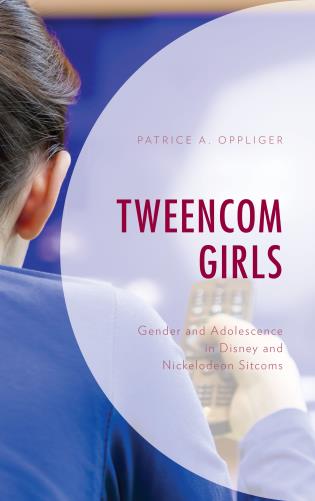 Patrice Oppliger’s latest book, Tweencom girls: Gender and adolescence in Disney and Nickelodeon Sitcoms, is now available via Rowan & Littlefield.
Patrice Oppliger’s latest book, Tweencom girls: Gender and adolescence in Disney and Nickelodeon Sitcoms, is now available via Rowan & Littlefield. In today's ever-shifting online media landscape, "native advertising"—sponsored content that is integrated into a publication without being readily recognizable as promotional—has become increasingly commonplace across digital news platforms. The question then arises: How do individuals perceive native advertisements and are they able to differentiate them from non-promotional editorial content?
In today's ever-shifting online media landscape, "native advertising"—sponsored content that is integrated into a publication without being readily recognizable as promotional—has become increasingly commonplace across digital news platforms. The question then arises: How do individuals perceive native advertisements and are they able to differentiate them from non-promotional editorial content? With digital streaming platforms such as Netflix and Amazon Prime rapidly expanding their selections of original programming, there is no shortage of opportunities for television fans to “binge” their favorite dramas. But what are the effects of binge-watching behaviors, particularly when the content consumed features graphic violence?
With digital streaming platforms such as Netflix and Amazon Prime rapidly expanding their selections of original programming, there is no shortage of opportunities for television fans to “binge” their favorite dramas. But what are the effects of binge-watching behaviors, particularly when the content consumed features graphic violence?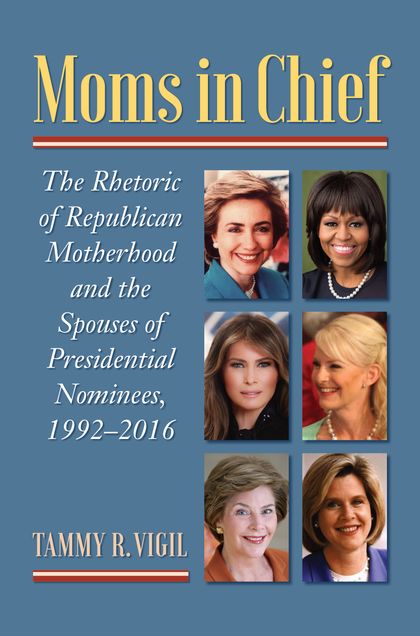 Closely examining the ways in which the spouses of recent presidential candidates have been presented to and perceived by the American public, CRC research fellow Tammy R. Vigil's new book
Closely examining the ways in which the spouses of recent presidential candidates have been presented to and perceived by the American public, CRC research fellow Tammy R. Vigil's new book 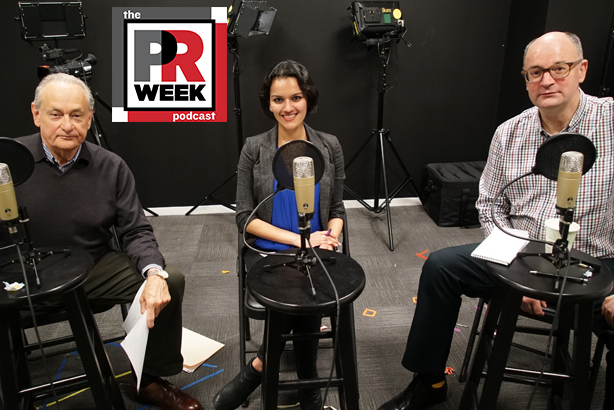
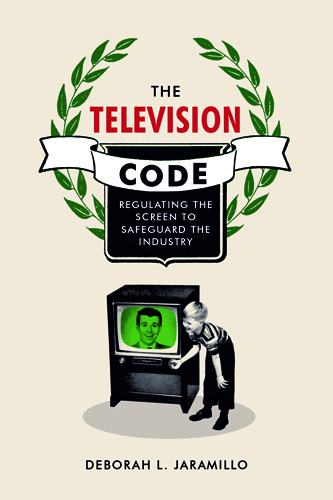 The broadcasting industry’s trade association, the National Association of Broadcasters (NAB), sought to sanitize television content via its self-regulatory document, the Television Code. The Code covered everything from the stories, images, and sounds of TV programs (no profanity, illicit sex and drinking, negative portrayals of family life and law enforcement officials, or irreverence for God and religion) to the allowable number of commercial minutes per hour of programming. It mandated that broadcasters make time for religious programming and discouraged them from charging for it. And it called for tasteful and accurate coverage of news, public events, and controversial issues.
The broadcasting industry’s trade association, the National Association of Broadcasters (NAB), sought to sanitize television content via its self-regulatory document, the Television Code. The Code covered everything from the stories, images, and sounds of TV programs (no profanity, illicit sex and drinking, negative portrayals of family life and law enforcement officials, or irreverence for God and religion) to the allowable number of commercial minutes per hour of programming. It mandated that broadcasters make time for religious programming and discouraged them from charging for it. And it called for tasteful and accurate coverage of news, public events, and controversial issues.